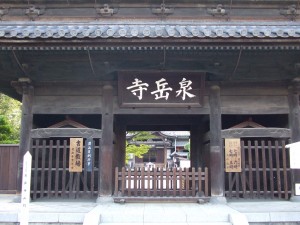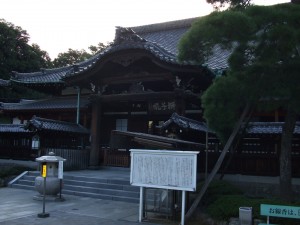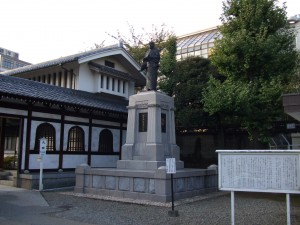


In Japanese history the word bushido – the warrior’s code was a major ingredient as it embodied allegiance, determination and fortitude. I recall very clearly that even when I worked with American Express in Japan (late 1970s and 80s) and interviewed job applicants when I asked them about their strengths and areas which they were working on to improve, at least 80% of the applicants used the words “never give up” or to have stamina (bariki ga aru). This never give up attitude is seen in Japanese movies (Chushigura) , plays (in particular Kabuki) and puppeteering (Bunrako) and is well to the fore in stories about the 47 ronin (masterless samurai).
Sengakuji (泉岳寺) is a small but very famous soto zen temple as it is the grave site of the 47 ronin where two festivals are held each year, one to celebrate the death by seppuku (ritual suicide) of Asano Takuminokami Naganori (December 14th) and the other the similar deaths of the 47 ronin (February 4th). Thousands of visitors attend the festivals each year where they come to pray and burn incense at the graves of these revered courageous loyal warriors.
The story goes something like this. Asano, one of the Shogun’s daimyo (feudal lord), along with others was invited to Edo Castle (today’s Emperor’s Palace) during Shogun Tokugawa Tsunayoshi’s tenure to be shown around the castle and to be instructed in the castle’s intricate etiquette . The master of protocol, Kira Hozukenosuke Yoshinaka was very harsh on and impolite to Asano. Kira was so rude that at one point during the visit Asano drew his sword and struck Kira. Asano’s act broke a golden rule of Edo Castle where everyone was forbidden to draw their sword and he also broke another well known credence which was to never hit someone in anger. Asano was therefore sentenced to commit seppuku which he did at Sengakuji. Asano’s samurai were not allowed to appoint a replacement for Asano and so they became ronin. For one year they plotted to kill Kira to avenge Asano’s death as they felt that Kira should have been forced to commit seppuku also and eventually they went to Kira’s compound in Ryoguku (両国), an area famous today for its sumo stables and chunka ryori restaurants, and decapitated him. They (all 47 of them) were subsequently sentenced to seppuku which they too carried-out at Sengakuji.
I visited Sengakuji during the recent October long weekend in order to take some photographs for this posting and to rekindle my knowledge of its historically significant importance to the Japanese samurai spirit. This was my second visit to this small temple and grave yard and compared to my first visit, during the festival period some 20 odd years ago, it was surprisingly very quiet – which was a plus as I was able to leisurely move around and take photographs without having many unknown faces in them.
I guess in a way it is a bit gruesome as not only is each grave site marked with a head stone but also sites are marked where Kira’s head was washed in a well, and the stone where Asano committed seppuku.
In addition there is a magnificent statue monument to Oishi Kuranosuke who was the” leader” of the ronin.
Asano, Kira and the ronin are enshrined at Sengakuji. It may seem strange that Kira is also buried here but the majority of people thought that the Shogun was responsible for the deaths of all 49 people involved in this episode and that it was not Kira's fault that he too was not instructed to commit seppuku.
Ken
Smith's School of English Koenji
Leave a Reply